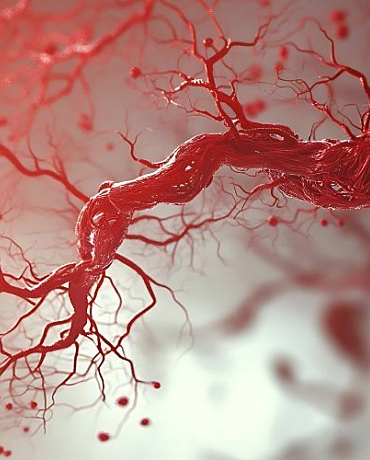People with a family history of depression and bipolar disorder can now evaluate the risk of developing them, thanks to a new website launched by NeuRA and UNSW researchers.
A new interactive website launched by NeuRA and UNSW mental health researchers allows people with a family history of major depressive or bipolar disorder to work out how likely it is that they – or any of their offspring – could develop these mental illnesses.
And according to the research article published in BMC Psychiatry which reported on the trial of this website with 202 participants, this new psychoeducational tool fills a gap in knowledge that is unmet by existing online interventions.
After setting up a free account on the website at links.neura.edu (titled Links: Understanding depression in the family), users begin with a short anonymous questionnaire about the individual’s and immediate family members’ history in experiencing episodes of major depressive disorder (MDD) or bipolar disorder (BD).
The user is then taken on an educational journey about the types of depression, the degree to which genetics and environmental factors play a part, the likelihood of experiencing MDD or BD if there is a family history, as well as prevention and coping strategies.
Lead author of the study Professor Bettina Meiser says the website was developed by UNSW, Neuroscience Research Australia (NeuRA) and collaborators at other universities to address a gap in treatment that is currently not available to people concerned about their own or family members’ vulnerability to depression.
“There aren’t really any specialised genetic counsellors who cover psychiatric illnesses in Australia,” she says.
“The vast majority of genetic counsellors do prenatal genetic counselling or cancer genetic counselling. So we identified a gap and for that reason we set up this website to cater for what we believe is a sizeable group of people.”
Evaluation tool
Part of the user’s education involves using a tool that estimates how likely he or she could develop MDD or BD if these have been experienced by close blood relatives (parents, siblings or children).
Professor Meiser, who is also head of UNSW’s Psychosocial Research Group, says people may be relieved to find out that the chances of developing MDD or BD is not as high as people typically think if there is already a history of it in the family.
“The good news is that while there is certainly a genetic component to both MDD and BD, the chances of a child developing the same condition as their parents is considerably lower than fifty-fifty,” she says.
For example, a person with two or more close blood relatives who have bipolar disorder has an 18% chance of developing the condition themselves in their lifetime or 12% in the next year. This compares with 1% when looking at the Australian population as a whole for both timeframes.
“Our study showed that many people with a family history of MDD or BD greatly overestimate the risk of passing on this condition to their children,” Professor Meiser says.
“We found that the Links website improved participants’ accuracy at estimating the future risk of bipolar disorder. So this is clearly a resource that can allay fears around this, and we believe it may also lead to decreased self-stigmatisation about having the condition.”
Environmental factors
While assessing genetic risk is an important component of an understanding of depressive disorders, the Links website resource shows that environmental factors are critical in determining whether or not a person develops MDD or BD.
“All of us have a fixed predisposition to depressive disorders that our experience in the world adds to which can make us more vulnerable to depression – things like relationships, work, stress, socioeconomic backgrounds, our social networks and health,” Professor Meiser says.
To illustrate this point, the Links website uses an analogy it calls the ‘mental illness jar model’. This model says that everyone is born with a fixed number of genetic factors in their jar, which will not change over their lifetime. The space left in the jar represents someone’s vulnerability to MDD or BP. Once the jar is filled up by environmental factors added over time, a period of depression can occur.
 Picture: links.neura.edu.au
Picture: links.neura.edu.au“So someone who has more genetic factors in their jar may take fewer environmental factors to become full,” says Professor Meiser.
“But it is possible to have all these genetic factors and still not develop MDD or BP due to resilience and good prevention strategies.”
The Links website lists a number of tested prevention strategies, with the most effective listed as psychological strategies (including therapy and mind exercises), regular physical exercise and adequate amounts of sleep.
Interestingly, seeing a mental health practitioner is recommended as a pre-emptive strategy for people with a family history of MDD or BD, even if they are showing no symptoms of the illness.
“Our study showed that the Links website increased users’ intention to adopt psychological therapy as a preventative measure against depression,” Professor Meiser says.
“In fact, the increase in the proportion of individuals who intended to undergo or had undergone psychological therapy from before and after undertaking the online educational course was 22%.”
Professor Meiser says that more than 5000 people have registered for the website already and the researchers plan to promote the website further through mental health and GP organisations.
If you need someone to talk to:
For Youth:
Kids Helpline: 1800 551 800
Headspace: 1800 650 890
For Adults:
Lifeline: 13 11 14
Beyond Blue:1300 22 46 36.
Suicide Callback Service: 1300 659 467
MensLine Australia: 1300 789 978




